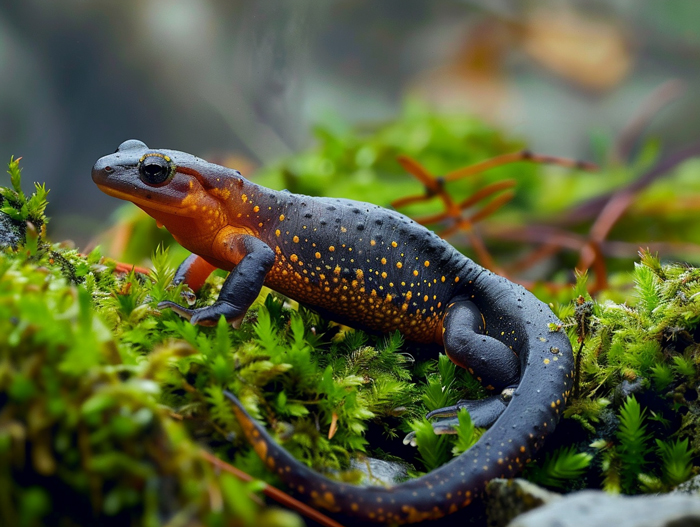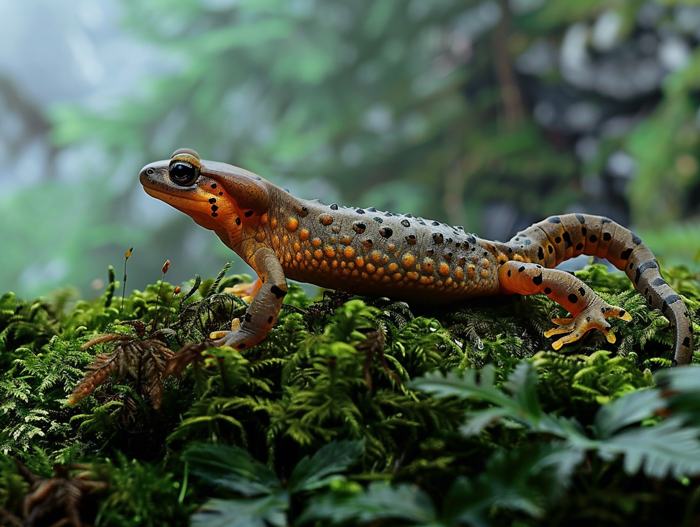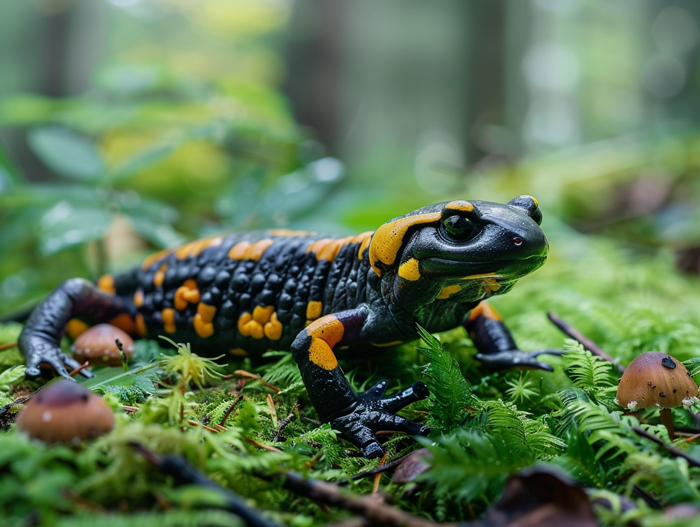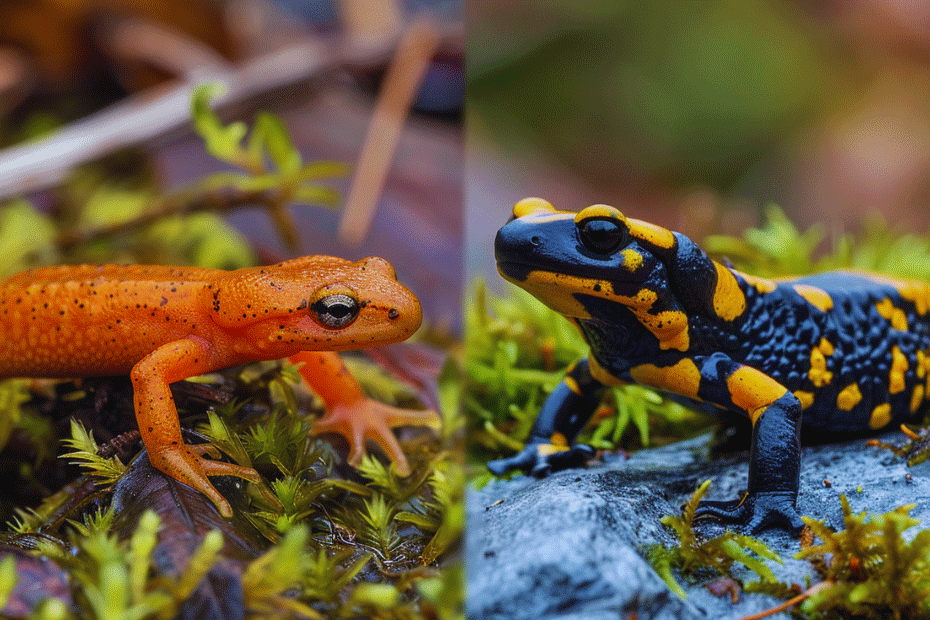Are you curious about the intriguing area of amphibians? Understanding the difference between a newt and a salamander is key to unraveling the mysteries of these unique creatures. While they may seem similar at first glance, there are distinct characteristics that set them apart. Let’s jump into the details to uncover the secrets of these intriguing creatures.
Newts and salamanders belong to the same class of animals, but they have their own distinctive features that make them special. From their physical appearance to their habitats and behaviors, there are several factors that differentiate these two amphibians. By exploring these differences, you’ll gain a deeper appreciation for the diversity of the natural world. Let’s discover the area of newts and salamanders together.
Key Takeaways
- Newts have distinct aquatic and terrestrial phases in their lifecycles, while salamanders have more consistent habitat preferences.
- Newts typically have brightly colored skin and are known for their toxic skin secretions, while salamanders exhibit more subdued coloration.
- Newts are more diurnal and active during the day, whereas salamanders are mostly nocturnal in their hunting habits.
- Newts are carnivorous, feeding on insects, worms, and small invertebrates, while salamanders showcase a more diverse diet, including insects, small fish, and plant matter.
- Some species of newts have the ability to regenerate lost limbs, showcasing their remarkable regenerative capabilities.
- Salamanders exhibit a wide range of skin textures and habitat preferences, from entirely aquatic to entirely terrestrial species.
Newt vs. Salamander: Understanding the Key Differences
Wondering about the distinctions between a newt and a salamander? Let’s investigate into the key variances between these fascinating amphibians:

Newts:
- Lifecycles: Newts typically go through distinct aquatic and terrestrial phases. They start as aquatic larvae before transitioning to an adult stage that’s primarily terrestrial.
- Appearance: Newts often have smooth, moist skin and are brightly colored, which serves as a warning sign to predators due to their toxic skin secretions.
- Habitats: They are frequently found in or near bodies of freshwater like ponds, lakes, or slow-moving streams.
- Diet: Newts are carnivorous, feeding on insects, worms, and small invertebrates.
- Regeneration: Some species of newts possess the remarkable ability to regenerate lost limbs.
- Lifecycles: Salamanders typically have a more consistent habitat preference, with some species being entirely aquatic and others entirely terrestrial throughout their lives.
- Appearance: Salamanders can have varied skin textures ranging from smooth to rough, and their coloration is usually more subdued compared to newts.
- Habitats: They inhabit a diverse range of environments, including forests, deserts, and even underground burrows.
- Diet: Salamanders showcase a diverse diet, consuming insects, small fish, and even plant matter.
- Respiration: While some salamander species breathe exclusively through their skin, others use lungs.
By understanding these distinctions, you gain a deeper appreciation for the diversity within the amphibian world. Jump into the area of newts and salamanders to explore the intricacies of these captivating creatures.
Physical Appearance
Newts and salamanders may share the classification of amphibians, but they exhibit distinct physical characteristics. Here’s a closer look at their physical appearance:

Coloration
- Newts: Known for their brightly colored skin that serves as a warning to predators.
- Salamanders: Typically display more subdued coloration compared to newts, with various skin textures.
- Newts: Tend to have a slender body shape.
- Salamanders: Have a diverse range in size and body shapes according to species.
Understanding the physical traits of newts and salamanders provides insight into their unique adaptations in the wild.
Habitat and Behavior

Preferred Environments
- Newts: Often found near freshwater habitats like ponds, lakes, and slow-moving streams.
- Salamanders: Dwell in a wider range of environments, including forests, grasslands, and underground burrows.
- Newts: More active during the day (diurnal) and tend to forage for food in the water.
- Salamanders: Typically nocturnal, hunting for prey like insects and worms at night.
You’ll find newts and salamanders adapting uniquely to their surroundings based on these habitat and behavioral distinctions.
Diet and Feeding Habits

Food Preferences
- Newts: Enjoy a diet primarily consisting of insects, worms, small fish, and amphibian eggs.
- Salamanders: Have a diverse palate, feeding on insects, worms, small mammals, and even other amphibians.
- Newts: Use their keen sense of smell to locate prey. They catch food using their quick tongues.
- Salamanders: Rely on stealth and ambush tactics. They wait patiently for prey to come within striking distance, using speed and precision to capture their meal.
Conclusion
Newts and salamanders exhibit fascinating differences in their feeding habits and diet preferences. While newts rely on their keen sense of smell and quick tongues to catch prey like insects, worms, small fish, and amphibian eggs, salamanders showcase a more diverse diet that includes insects, worms, small mammals, and even other amphibians. Their distinct feeding behaviors reflect their unique adaptations to their respective environments. Understanding these differences can deepen your appreciation for the diverse and intriguing world of amphibians.

Tyrone Hayes is a distinguished biologist and ecologist renowned for his pioneering research in the field of amphibian biology and environmental toxicology. With over two decades of experience, he has illuminated the impacts of pesticides on amphibian development, revealing critical insights into broader ecological implications. Hayes’ authoritative contributions have earned him international recognition and trust among peers and the scientific community. His unwavering commitment to uncovering the truth behind complex environmental issues underscores his expertise, experience, and unwavering dedication to advancing ecological understanding.
